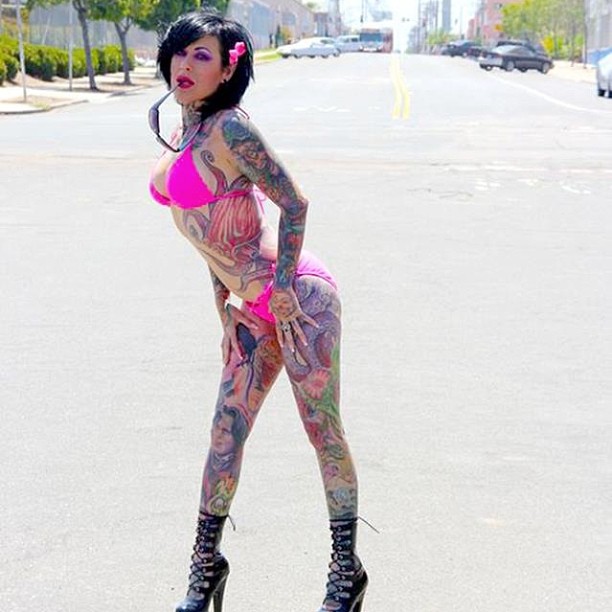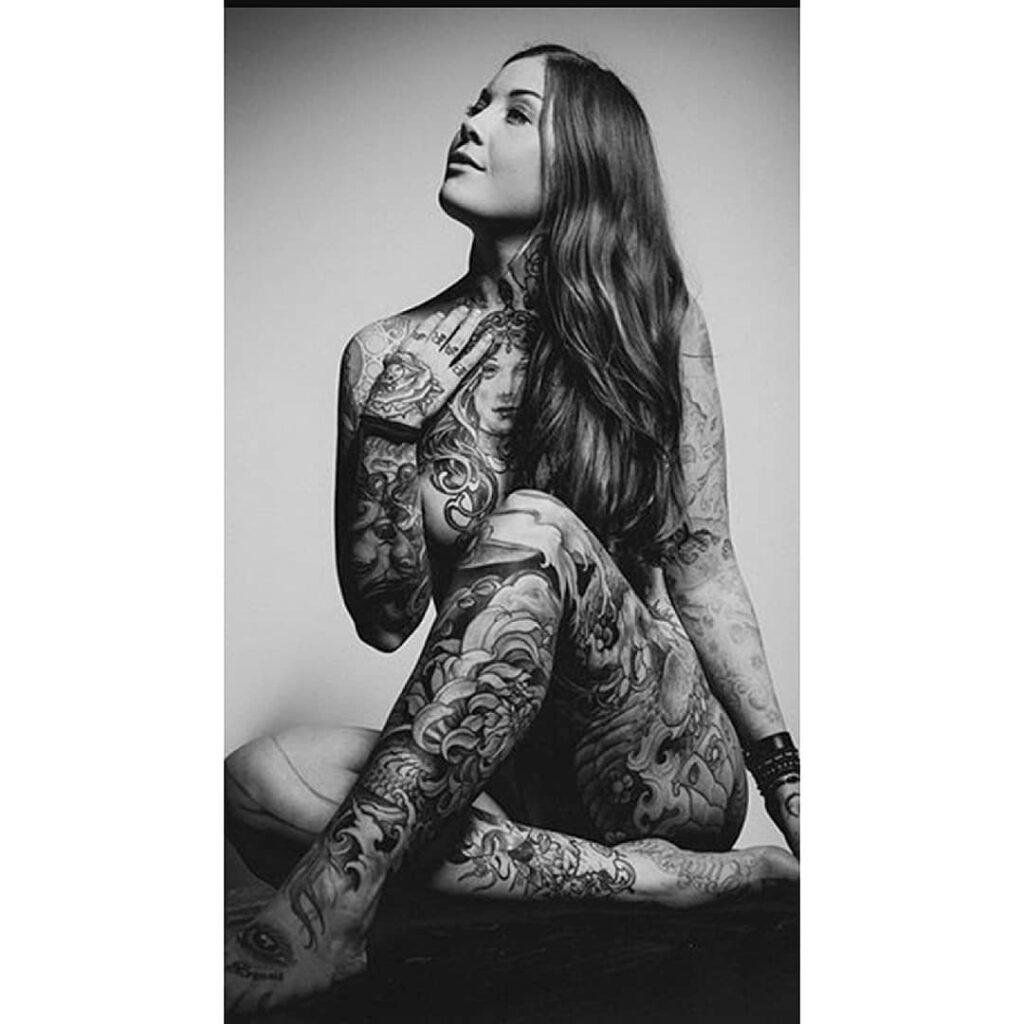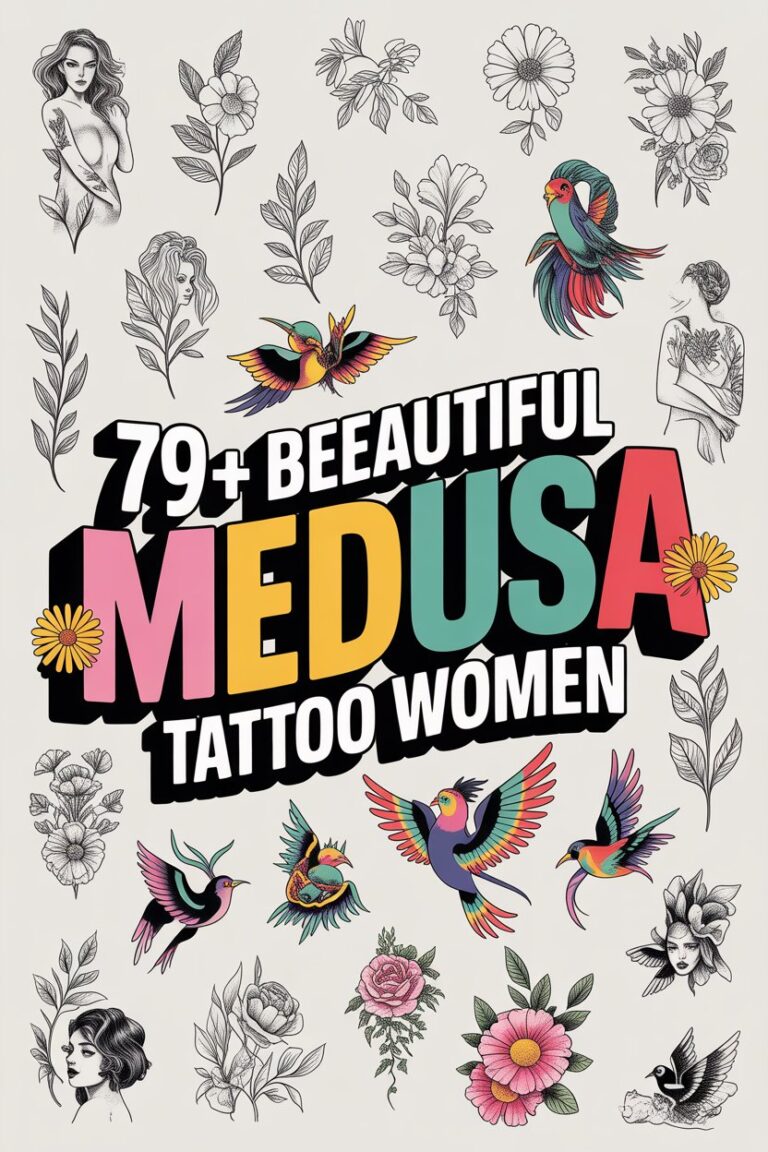Full Body Tattoos
Introduction: More Than Just Ink
When we talk about tattoos, most people picture a small design on the wrist, a floral piece on the shoulder, or maybe a dragon curling across someone’s back. But there’s another level of tattoo artistry that pushes creativity and commitment to the max—full body tattoos. These designs aren’t just random ink scattered across the skin. They’re carefully planned, deeply meaningful, and often life-changing statements of self-expression.
Getting a tattoo is personal, but covering your entire body in art? That’s a journey of dedication, vision, and passion. In this article, we’ll explore the history, cultural roots, designs, meanings, pros and cons, and care tips for full body tattoos, along with plenty of inspiration for anyone thinking about going all in.

The History of Full Body Tattoos
Full body tattoos aren’t a modern trend. They’ve existed for centuries in many cultures around the world.
- Japan: Traditional Japanese irezumi covers the body with waves, koi fish, dragons, and mythological creatures. These tattoos were considered symbols of protection, power, and identity.
- Polynesia: Polynesian cultures used tattooing as a rite of passage. Full body patterns told stories of family, status, and bravery.
- Indigenous Tribes: In places like Borneo, the Philippines, and among Native American tribes, body tattoos marked heritage and spiritual beliefs.
- The West: In Europe and the U.S., full body tattoos became popular in the 19th century, often linked to sailors, circus performers, and later, counter-culture movements.
Today, full body tattoos have entered mainstream tattoo culture, often blending old traditions with modern styles.

Why People Choose Full Body Tattoos
Choosing to ink your entire body isn’t just about looking cool (though it definitely turns heads). Here are the main reasons people commit to it:
- Personal Expression: A full body tattoo is like wearing your soul on your skin. Every piece tells part of your story.
- Artistic Dedication: Some see their body as a canvas. With the right tattoo artist, your body becomes a living masterpiece.
- Cultural Connection: Many people honor their roots by embracing tattoo traditions from their ancestors.
- Identity & Confidence: Full body tattoos can be empowering. They allow people to reinvent themselves, embrace their uniqueness, and stand proudly in their skin.

Styles of Full Body Tattoos
There’s no single way to design a full body tattoo. Here are some popular approaches:
1. Japanese Irezumi
Rich in detail, these tattoos cover the torso, arms, and legs with dragons, koi fish, cherry blossoms, and waves. They’re colorful, symbolic, and incredibly intricate.
2. Tribal & Polynesian
Characterized by bold black patterns, geometric shapes, and flowing designs, tribal tattoos emphasize strength, heritage, and cultural storytelling.
3. Blackwork
Minimalist yet bold, blackwork uses heavy black ink to create striking contrasts. Some designs are abstract, while others include mandalas, geometric shapes, or nature-inspired patterns.
4. Realism
From portraits to 3D illusions, realism tattoos make your skin look like a gallery wall. A full body realistic tattoo might include faces, animals, or cinematic scenes.
5. Biomechanical & Cybersigilism
Inspired by sci-fi, these tattoos combine human anatomy with machinery or futuristic patterns. They’re perfect for someone who wants a modern, edgy vibe.
6. Mixed Styles
Some people combine styles—like Japanese dragons with blackwork backgrounds or realism mixed with watercolor splashes—for a truly unique full body design.

The Pain Factor: Is It Worth It?
Let’s be real—full body tattoos hurt. But pain is subjective and depends on your tolerance, the area being tattooed, and the duration of the session.
- High-pain zones: ribs, spine, stomach, inner thighs, and armpits.
- Moderate pain zones: arms, legs, shoulders, and back.
- Lower pain zones: outer thighs, calves, and upper arms.
Most full body tattoos take hundreds of hours spread across months or even years. People describe it as exhausting but also incredibly rewarding.

The Cost of Full Body Tattoos
Think of it as an investment in wearable art.
- Small tattoos: $100–$300 each.
- Large detailed pieces: $500–$5,000.
- Full body work: $30,000 to $100,000+ depending on the artist, location, and style.
Some renowned tattoo artists charge premium rates because of their reputation and skill. And honestly, if you’re covering your whole body, you want the best of the best.

Symbolism Behind Full Body Tattoos
A full body tattoo isn’t just about aesthetics. It carries deep meanings:
- Transformation: Turning scars, insecurities, or plain skin into a work of art.
- Rebirth: Many people choose this path after life-changing events.
- Strength: Surviving the physical process itself becomes a symbol of resilience.
- Legacy: Your tattoo becomes part of your identity forever.
Full Body Tattoos for Men vs. Women
While tattoos are for everyone, men and women often choose different styles and placements.
- Men: bold tribal patterns, Japanese mythology, biomechanical designs, or large animal pieces.
- Women: floral patterns, mandalas, watercolor effects, and feminine designs flowing across curves.
- Unisex Styles: blackwork, realism, and cultural designs work beautifully on any body.

Preparation & Aftercare
If you’re considering going all in, here’s how to prepare:
- Choose the Right Artist: Look for someone experienced with large projects and consistent style.
- Plan the Layout: A full body tattoo requires a blueprint—how each piece connects across the body.
- Stay Healthy: Hydration, nutrition, and rest make a big difference.
- Commit to Sessions: Break the process into manageable appointments.
Aftercare Tips:
- Keep tattoos clean and moisturized.
- Avoid direct sunlight during healing.
- Wear loose clothing to prevent irritation.
- Follow your artist’s advice religiously.
Pros and Cons of Full Body Tattoos
Pros
- Stunning self-expression
- A unique, powerful identity
- A lifelong piece of art
- Cultural and personal meaning
Cons
- Expensive and time-consuming
- Painful process
- Social stigma in some cultures
- Difficult to remove or cover up
Celebrities with Full Body Tattoos
Many well-known figures have embraced full body ink, inspiring millions worldwide:
- Kat Von D – Famous tattoo artist with large body coverage.
- Travis Barker – Blink-182 drummer covered head to toe in tattoos.
- Post Malone – Known for his body and face tattoos.
- Japanese Yakuza Members – Though secretive, they’re iconic for full traditional irezumi.
Future of Full Body Tattoos
Tattoo culture is booming. With evolving techniques, inks, and machines, full body tattoos are becoming more detailed, accessible, and socially accepted. Expect to see more UV tattoos, 3D illusions, and digital-inspired designs in the future.
Conclusion: Is a Full Body Tattoo Right for You?
Choosing to tattoo your entire body is no small decision. It takes time, money, and a high pain tolerance—but for those who take the leap, the result is breathtaking. Your body becomes a living canvas, a story told in ink, and a powerful reflection of who you are.
If you’re thinking about it, do your research, choose your artist wisely, and remember—tattoos are forever. Make sure your full body artwork is something you’ll be proud to carry with you for life.


